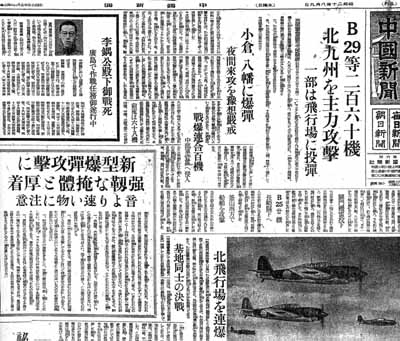Hiroshima Memo: No Effective Protection for a Nuclear Attack
Apr. 23, 2008
by Akira Tashiro, Executive Director of the Hiroshima Peace Media Center
In the year following passage of the Civil Protection Law in 2004, the national government formulated security guidelines in preparation for military emergencies, including an attack by nuclear weapons.
In these guidelines, however, an estimate of the damage that would likely be inflicted in the event of such an attack, which is presumably necessary for drawing up credible guidelines, has not been included. Nor is any mention made of countermeasures for coping with the predicted damage. In regard to evacuation, the guidelines simply state, “Avoid leeward directions, limit external exposure to nuclear fallout by the use of such items as gloves, hats and raincoats. Moreover, cover your month and nose with an uncontaminated towel or something else and avoid taking in water and food that are suspected of having been contaminated.”
These ideas are not much different from the countermeasures that appeared in the Chugoku Shimbun on August 9, 1945, three days after the “new type of bomb” was dropped on Hiroshima: “Wear clothes as thick as possible for protection. Cover yourself completely so that no skin will be exposed. It is important to be ready to act at a moment's notice so dress, as far as possible, in protective hats, masks, and gloves.”
On the very day this instruction appeared in the newspaper, another atomic bomb was dropped on Nagasaki. Though it was a time of war, and information was strictly controlled by the government, I find it horrifying that such futile guidance was disseminated to residents of Hiroshima when the entire city lay devastated and bodies were heaped among the burnt rubble. At the same time, as a journalist myself, I cannot help but feel deep remorse for the supporting role that Japanese newspapers, including the Chugoku Shimbun, played during the war.
What have Japan's political leaders and bureaucrats, who drew up these guidelines for nuclear attack, learned over the more than half-century since the tragedies of Hiroshima and Nagasaki? The only thing such guidelines can achieve is to delude the people of Japan into believing “we can survive a nuclear war.” If the political leadership were truly in touch with Japan's identity as an “A-bombed country,” they would instead communicate the horrific devastation of Hiroshima and Nagasaki to the people of Japan and the people of the world and they would stress that the only realistic guidelines for “civil protection” can be the abolition of nuclear weapons themselves.
At most, the government's current guidelines concerning nuclear attack might be appropriate in the event of an evacuation from a nuclear power plant or similar facility that has experienced a radiation leak.
In the year following passage of the Civil Protection Law in 2004, the national government formulated security guidelines in preparation for military emergencies, including an attack by nuclear weapons.
In these guidelines, however, an estimate of the damage that would likely be inflicted in the event of such an attack, which is presumably necessary for drawing up credible guidelines, has not been included. Nor is any mention made of countermeasures for coping with the predicted damage. In regard to evacuation, the guidelines simply state, “Avoid leeward directions, limit external exposure to nuclear fallout by the use of such items as gloves, hats and raincoats. Moreover, cover your month and nose with an uncontaminated towel or something else and avoid taking in water and food that are suspected of having been contaminated.”
These ideas are not much different from the countermeasures that appeared in the Chugoku Shimbun on August 9, 1945, three days after the “new type of bomb” was dropped on Hiroshima: “Wear clothes as thick as possible for protection. Cover yourself completely so that no skin will be exposed. It is important to be ready to act at a moment's notice so dress, as far as possible, in protective hats, masks, and gloves.”
On the very day this instruction appeared in the newspaper, another atomic bomb was dropped on Nagasaki. Though it was a time of war, and information was strictly controlled by the government, I find it horrifying that such futile guidance was disseminated to residents of Hiroshima when the entire city lay devastated and bodies were heaped among the burnt rubble. At the same time, as a journalist myself, I cannot help but feel deep remorse for the supporting role that Japanese newspapers, including the Chugoku Shimbun, played during the war.
What have Japan's political leaders and bureaucrats, who drew up these guidelines for nuclear attack, learned over the more than half-century since the tragedies of Hiroshima and Nagasaki? The only thing such guidelines can achieve is to delude the people of Japan into believing “we can survive a nuclear war.” If the political leadership were truly in touch with Japan's identity as an “A-bombed country,” they would instead communicate the horrific devastation of Hiroshima and Nagasaki to the people of Japan and the people of the world and they would stress that the only realistic guidelines for “civil protection” can be the abolition of nuclear weapons themselves.
At most, the government's current guidelines concerning nuclear attack might be appropriate in the event of an evacuation from a nuclear power plant or similar facility that has experienced a radiation leak.








